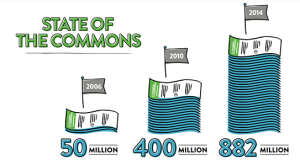This week in class we explored some digital tools for journalists, including Google Media Tools, Instapaper, and Feedily. I think the Google Media Tools website is particularly helpful as it provides useful tools for anyon e who uses Google. It offers tips and tricks to make searches more effective, such as how to filter your search results to only academic sources (xxx site.edu) or to a specific type of document (xxx filetype:doc). Note that “xxx” is where you would write the topic you are searching. You can write different document types where I wrote “doc” to get information in the form of graphs, charts or pdfs, for instance. One tool that I learned from Google Media Tools which I will definitely use for my journalistic research is how to find data inside a specific website (xxx site:). For example, you can search all mentions of “population” on any .gov website or on the NBC website by typing population site:.gov OR population site:nbc.com into the Google search bar.
e who uses Google. It offers tips and tricks to make searches more effective, such as how to filter your search results to only academic sources (xxx site.edu) or to a specific type of document (xxx filetype:doc). Note that “xxx” is where you would write the topic you are searching. You can write different document types where I wrote “doc” to get information in the form of graphs, charts or pdfs, for instance. One tool that I learned from Google Media Tools which I will definitely use for my journalistic research is how to find data inside a specific website (xxx site:). For example, you can search all mentions of “population” on any .gov website or on the NBC website by typing population site:.gov OR population site:nbc.com into the Google search bar.

After learning about some useful digital tools in class, I wanted to discover some other tools, websites and apps for myself that help journalists process, edit and publish their journalistic content. I came across a video on Youtube by Emmy award-winning journalist and ICFJ trainer Patricio Espinoza. Espinoza explains six digital tools that he uses on a daily basis and that he thinks are essential for other journalists.
To edit videos online for free, he suggests using Jaycut. Along with other online video editing tools, Jaycut does not offer as many features as off-line video editing software installed in computers, however About.com illustrates that “what [Jaycut] does, it does really well”. A strength of online video editing tools is that they are convenient for people who are on-the-go and switching computers, or for people who are collaborating with others on videos. Jaycut provides users with unlimited storage for video  files and allows users to instantaneously upload videos, add graphics and effects (including transitions, titles, and music), and directly upload them on video sharing websites like Youtube. Moreover, Espinoza reveals another website that he thinks is even more important for journalists: Creative Commons.
files and allows users to instantaneously upload videos, add graphics and effects (including transitions, titles, and music), and directly upload them on video sharing websites like Youtube. Moreover, Espinoza reveals another website that he thinks is even more important for journalists: Creative Commons.
![]() Many of you may have seen the “cc” symbol before but not understood exactly what it was or what its significance is in the world of journalism. Creative Commons (CC) is a non-profit organization that allows journalists to create a public copyright license for free. CC licenses help protect authors’ content while giving others the right to share, use, and contribute to the content without worrying about copyright infringement as long as they abide by conditions the authors create. For example, journalists can choose to let others only use
Many of you may have seen the “cc” symbol before but not understood exactly what it was or what its significance is in the world of journalism. Creative Commons (CC) is a non-profit organization that allows journalists to create a public copyright license for free. CC licenses help protect authors’ content while giving others the right to share, use, and contribute to the content without worrying about copyright infringement as long as they abide by conditions the authors create. For example, journalists can choose to let others only use  their work non-commerically. Creative Commons was only founded in 2001 but by 2014, there were already 882 million Creative Commons licensed works. The digital world we live in enables and promotes collaboration, and I think the demand for CC licenses will only go up from here.
their work non-commerically. Creative Commons was only founded in 2001 but by 2014, there were already 882 million Creative Commons licensed works. The digital world we live in enables and promotes collaboration, and I think the demand for CC licenses will only go up from here.